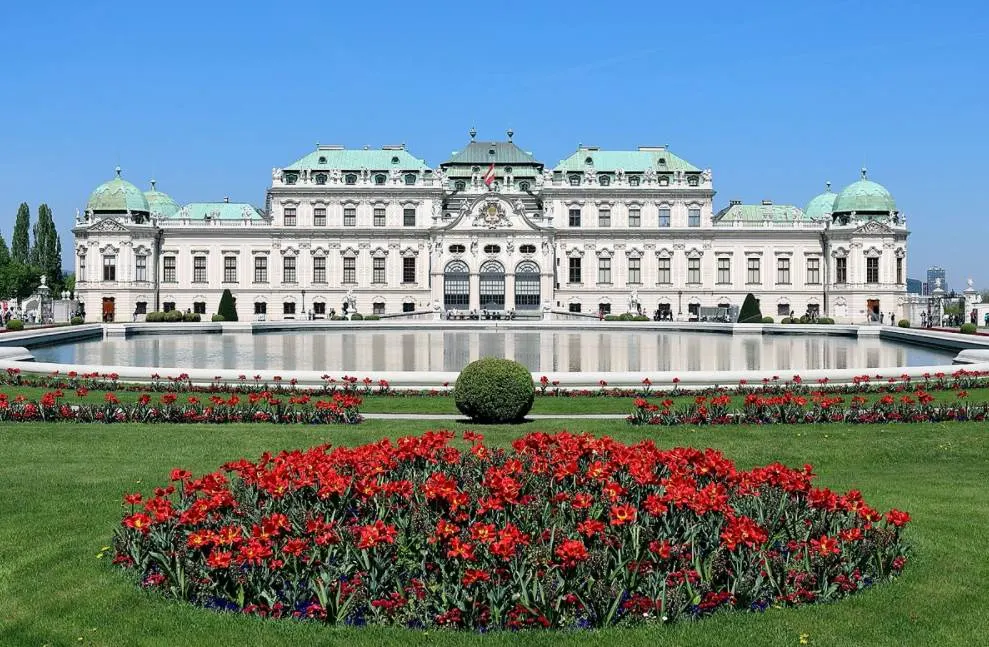Although Gustav Klimt (1862-1918) is considered to be one of the most famous Art Nouveau artists in history, he didn’t start his career producing amazing artworks in this revolutionary new style.
His career took a radical turn in a different direction following the sudden death of his brother Ernst. Academic painter Hans Makart (1840-1884) was the brother’s idol and together with a friend they formed a company that decorated newly constructed buildings in Vienna.
Klimt changed his style during the 1890s and produced most of his most famous paintings in the first decade of the 20th century.
In this article, we’ll take a closer look at some of the most interesting facts about The Kiss by Gustav Klimt, one of the Austrian artist’s ultimate masterpieces.
1. It was painted shortly after Klimt caused a massive scandal
Gustav Klimt made a drastic career change in the 1890s. He ditched Academic painting which revolved around historical and allegorical subjects in favor of a more personal style.
He became a member of the Vienna Secession in 1897. This art movement was closely related to the widespread Art Nouveau movement and became one of the leading figures.
This group was founded to provide a platform for unconventional artists. This was a far cry from the serious work he did before and which earned him the Golden Order of Merit from Emperor Franz Josef I of Austria in 1888.
Although he was a changed artist, he still received commissions to decorate buildings in Vienna. He caused quite a stir when he painted the “Klimt University of Vienna Ceiling Paintings” between 1901 and 1907 as his paintings were deemed to be “pornographic” in nature.
The artist started working on The Kiss shortly after this debacle in 1907 and completed it a year later in 1908.
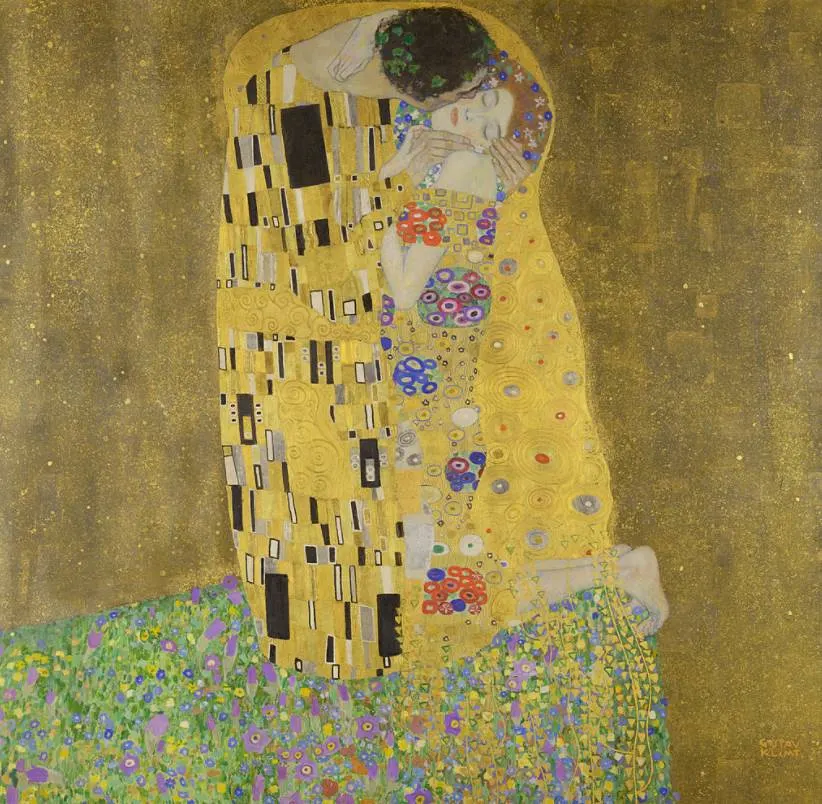
2. It had a different name when it was first exhibited in 1908

The painting was first exhibited at the 1908 Kunstshau in Vienna. At the time of the show, it wasn’t referred to as “The Kiss” but as “Liebespaar.” This translates to “The Lovers.”
The Kunstschau Wien 1908 was held on the grounds of Wiener Konzerthaus, a popular concert hall in Austria’s capital that was constructed 5 years later in 1913.
What’s fascinating is that this exhibition was organized by Gustav Klimt himself along with the Avant-Garde artists in his group. They purposely built a wooden structure that featured 54 exhibition rooms.
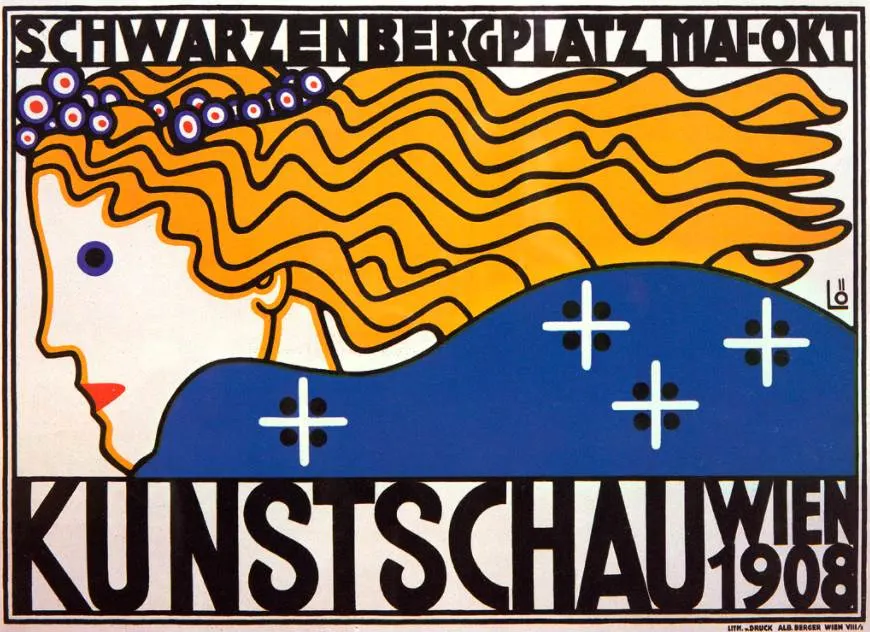
3. It’s unclear who the people in the painting really are
The painting depicts a couple as they embrace each other and kiss in the typical Art Nouveau style of the early 20th century. This also means that the identity of the couple isn’t exactly clear.
Some art historians have suggested that it’s a self-portrait of the artist together with his lifelong partner Emilie Flöge (1874-1952). She was the younger sister of Helene, a woman who married Ernst Klimt, Gustav’s brother.
She was an artist in her own right in the field of fashion design and a successful businesswoman as well.
An equally popular theory is that the model of the painting is a woman only known by her nickname “Red Hilda.” She was a popular model of Klimt and appeared in multiple of his works, including “Woman with a feather boa,” “Goldfish,” and “Danaë.”
Emilie also frequently modeled for the artist and he made several portraits of her.

4. The painting is decorated with a variety of remarkable materials
The Kiss was completed during a period described by art historians as Klimt’s “Golden Period.” This was a time that he was fascinated by gold leaf, silver, and platinum, elements he often used in his artworks.
What’s remarkable about his usage of these materials is that he got inspired to use them after visiting Itlay in 1903. At the Basilica of San Vitale in Ravenna, he had seen ancient mosaics that are decorated with gold leaf.
These famous Byzantine mosaic panels were completed in the year 547 A.D. and depict Roman Emperor Justinianus I, his Empress Theodora, and various other figures.
After seeing these mosaics he was hooked and vowed to integrate these into his works. This wasn’t a problem because his father was a gold engraver so he had learned to trade from him at a young age.
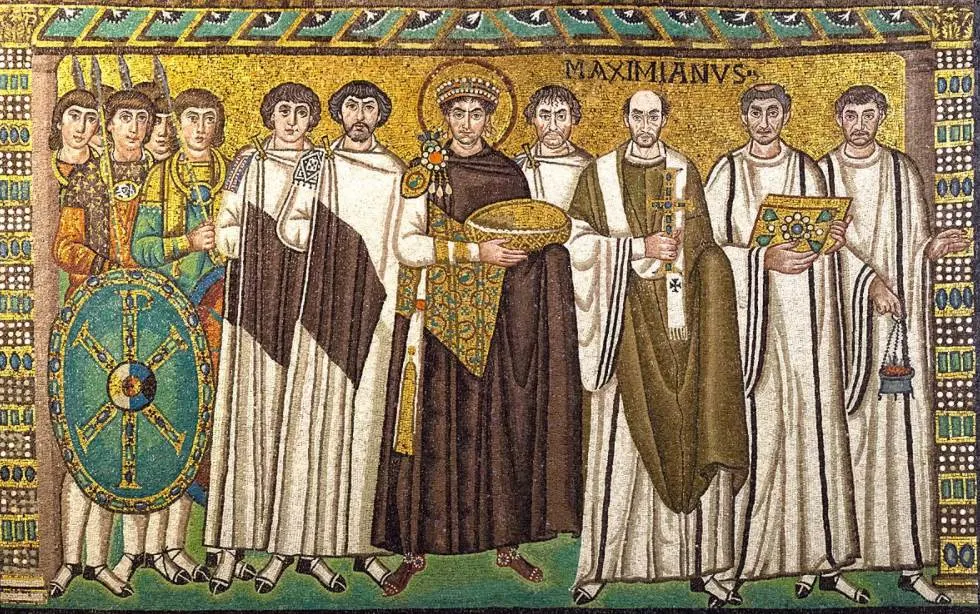
5. It wasn’t the first time that Klimt depicted a couple this way
The warm embrace of the couple and the gentle kiss weren’t new concepts for the artist. He had produced several artworks before on a similar subject, including one of his most famous works.
The Beethoven Frieze was completed between 1901 and 1902 and decorates the Secession Building in Vienna, the headquarters of the group.
He also decorated the walls of the Palais Stoclet in Brussels which includes an embracing couple. This work is called the “Stoclet Frieze” and was completed between 1905 and 1911.
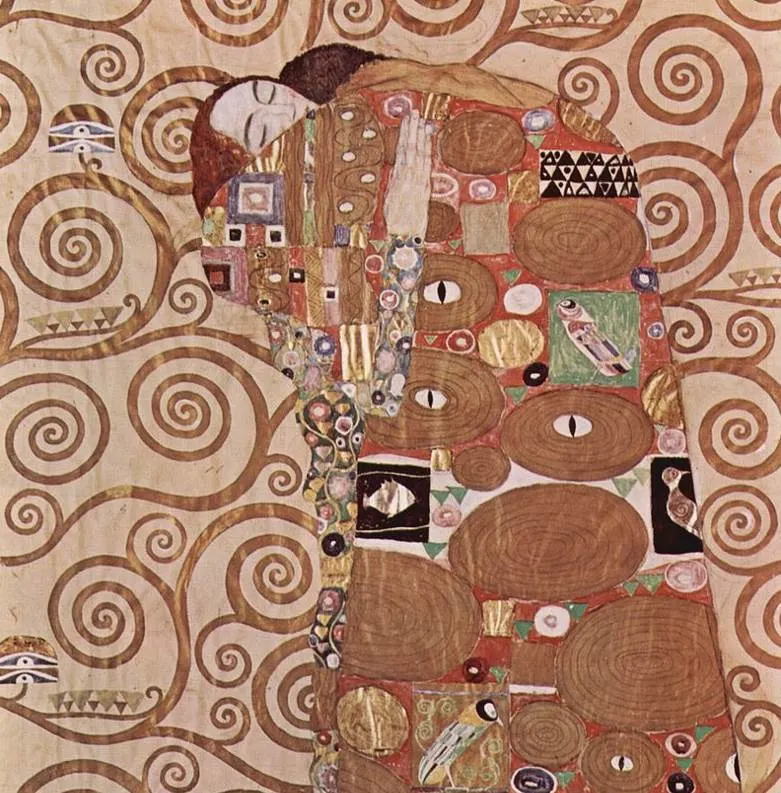
6. The work could be inspired by ancient stories
We know where he got the idea for using gold leaf in his paintings, but it’s unclear where he got the inspiration for the embracing and kissing couple.
One theory suggests that it depicts Apollo who kisses Daphne, a scene mentioned in the Metamorphoses of Ovid, a Latin work that was first published in the year 8 A.D. during the time of the first Roman Emperor Augustus.
Another suggestion is that it depicts the tale of Orpheus and Eurydice. Klimt possibly depicted the exact moment that Orpheus of Thrace kisses the beautiful Eurydice. This would explain why the woman is slightly fading away, something that happens in the story.
7. How big is The Kiss by Gustav Klimt?
This fascinating work of art is an oil and gold leaf on canvas painting and is a rather large work of art. That’s mainly because it’s square in shape.
The Kiss by Gustav Klimt has dimensions of 180 × 180 centimeters (71 × 71 inches).
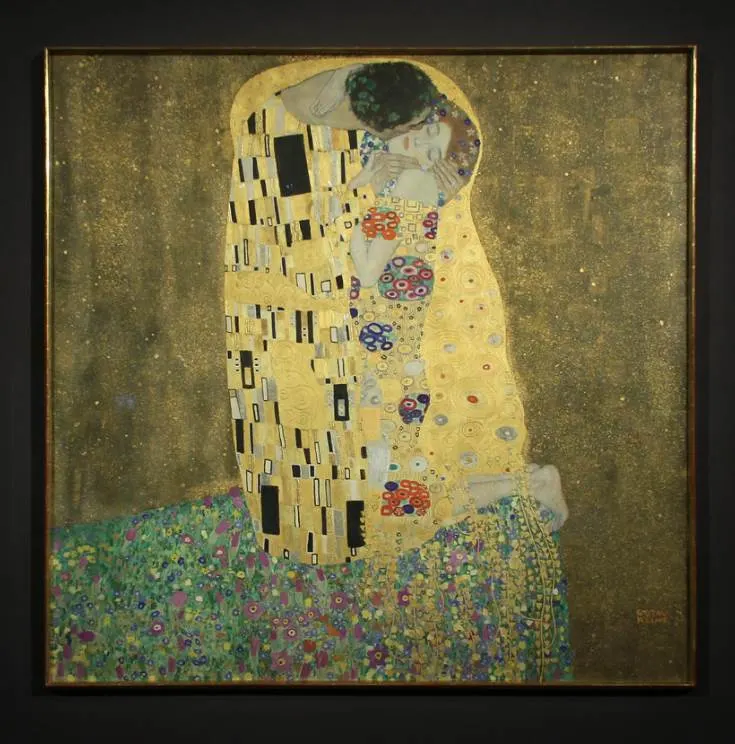
8. Where is the painting located today?
One of the most fascinating facts about The Kiss by Gustav Klimt is that it was remarkably well-received when it was exhibited at the Kunstschau in Vienna in 1908.
After all, this was just after the scandal caused by the ceiling paintings called Philosophy, Medicine, and Jurisprudence, at the University of Vienna.
The painting was admired so much that it was purchased by the Austrian state at the exhibition and has been in Austria’s possession ever since.
It’s considered to be one of the ultimate masterpieces of the Vienna Secession movement and can be admired at the Österreichische Galerie Belvedere museum at the immense Belvedere palace complex in Vienna.
